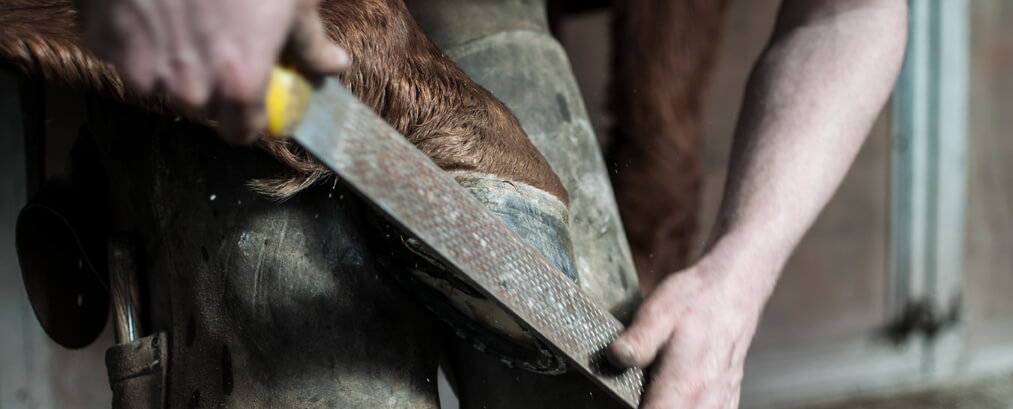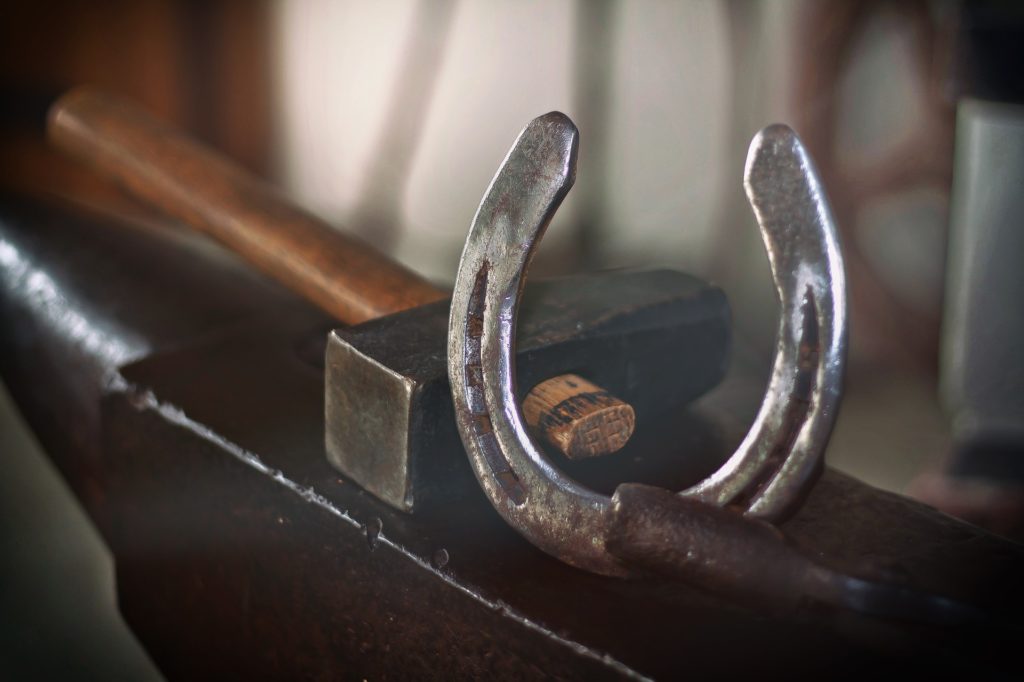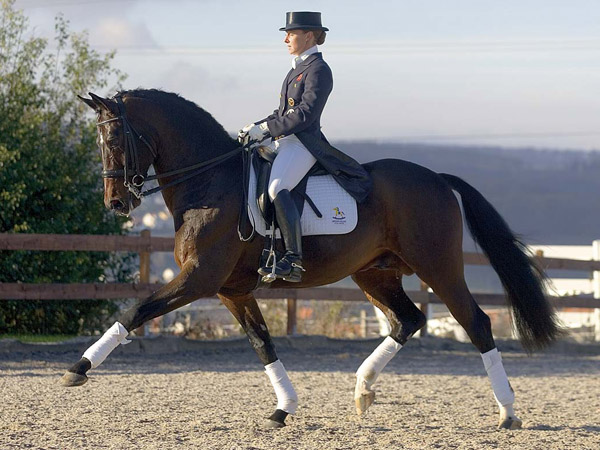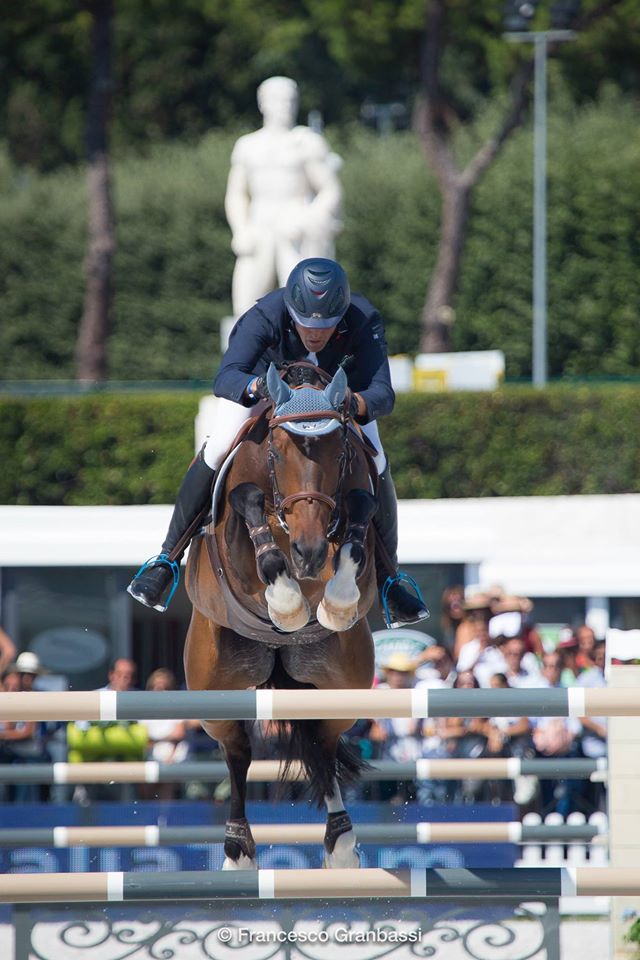Friday, August 9, 2019
Egalement appelé « parage naturel », le parage physiologique connaît un certain engouement depuis quelques années. Les avis sur le sujet sont divers. Notamment sur la compatibilité avec les chevaux orientés vers le sport car la première idée qui se corrèle à cette pratique est le « déferrage ». Vous découvrirez au fil de cet article que cette manière de penser les pieds de votre compagnon n’est pas uniquement une question de l’avoir ferré ou déferré.
Par ailleurs en fonction de certaines pathologies, il n’y a pas d’autres choix que le recours à ferrure orthopédique. De même pour la pratique de certaines disciplines sur herbe l’usage des crampons est indispensable, et donc d’une ferrure. Dans tous les cas, l’avis d’un professionnel est primordial et l’approbation de votre vétérinaire indispensable.

A présent, regardons cela d’un peu plus près…
Pour essayer de remédier aux problèmes de locomotion des équidés, l’Homme a inventé le ferrage. Ce dernier est devenu une pratique courante au cours du XIIe siècle. Cependant malgré cet effort, le nombre de pathologies n’a pas baissé.
C’est assez récemment, moins d’une cinquantaine d’années, que les esprits ont commencé à changer. Par exemple avec l’expansion des médecines alternatives et l’éthologie. Mais c’est durant les années 1990 qu’est réellement né le parage naturel.
L’idée, quant à elle, a commencé à émerger quelques décennies avant cela. Après trois courants de pensée ayant en commun une recherche de l’équilibre du pied ainsi qu’une corne forte et en bonne santé. Voici une brève description de ces différents courants :
Elle a mis en lumière le fait que les chevaux ayant une certaine valeur économique, vivant en boxe et ferrés régulièrement, présentent plus souvent des pathologies de locomotion que les chevaux vivant au pré, auxquels nous accordons généralement une attention moins soutenue.
Ses recherches ont montré que les pieds des chevaux domestiques ayant une conformation proche de celle des chevaux « sauvages » semblent être plus sains.
Son approche est une combinaison entre le parage physiologique et l’étude de l’environnement dans lequel évolue le cheval. Pour elle, toutes les pathologies de locomotion sont dues à la vie artificielle des équidés. Tout son travail a porté sur l’observation de la posture et des aplombs. Sans oublier l’environnement quotidien et le comportement des chevaux.
Son idée est de reproduire la conformation des pieds de Mustangs. Il a été un des contributeurs au développement du parage physiologique. Pour lui, nous devons stimuler toutes les 4 à 6 semaines la croissance de la corne grâce au parage en travaillant sur la paroi, la fourchette et le surplus de sole.
Après avoir suivi un cours sur la posée de fers collés (« equilox adhesive »), KC Lapierre a remis en question l’utilisation des fers rigides utilisés communément. Il créera quelques temps après un fer flexible à coller aux pieds des chevaux.

Sa pensée est que si nous avons une bonne compréhension de chaque structure qui compose le sabot ainsi que les fonctions de chacune, les soins pourront être adaptés et nous irons ainsi vers la performance du pied.
Sa théorie montre également que le placement de la 3e phalange au regard de l’axe osseux est dû à la bonne santé des ligaments, tendons et cartilages.
Son approche est une réelle description du fonctionnement biomécanique du sabot et montre l’importance des structures internes, qu’il appelle
La façon dont le pied du cheval utilise et disperse l’énergie créée durant l’impact avec le sol joue un rôle majeur dans la bonne santé de l’appareil locomoteur. En allant dans ce sens, sa méthode de « parage haute performance » permet de trouver l’équilibre optimal de l’articulation du pied, basée sur des références acquises sur les structures internes (3e phalange et cartilage latéral). Le but de cette pratique est de développer les structures internes afin d’obtenir un angle de 5°-6° entre la 3e phalange et le sol.
Pour finir, KC Lapierre a créé un système nommé « Perfect Hoof Wear » qui est une protection flexible, s’adaptant à chaque pied, laissant s’effectuer la stimulation naturelle par l’environnement et ainsi contribuer au développement optimal des structures internes. Ce sont des bandages synthétiques composés de résines qui s’activent lors d’un contact avec l’eau.

Quelques années plus tard, dans les années 2000, Xavier Meal (Podologue équin français diplômé de l’Institute of Applied Equine Podiatry en 2008) précise que d’avoir un cheval sans fer n’est pas uniquement question de ferrer ou déferrer mais aussi d’avoir une approche holistique des chevaux. Pour lui, comme pour les trois penseurs présentés précédemment, nous devons prendre en compte également l’environnement dans lequel évolue notre compagnon, ainsi que son alimentation et sa capacité de mouvements chaque jour.
une bonne locomotion n’est pas uniquement due au ferrage/non ferrage de nos compagnons. Le parage en est la clé et le parage naturel peut être une voie intéressante à emprunter, en fonction de chaque cheval et du travail demandé bien entendu. Mais ce n’est pas tout, une bonne compréhension de l’environnement dans lequel évolue votre compagnon ainsi que son alimentation et sa capacité de mouvements quotidienne sont aussi importants pour un développement correct des structures internes du pied, et donc une locomotion optimale.
Certains cavaliers de haut niveau ont intégré ces principes dans leur système et rencontre du succès.
Nous pouvons citer comme exemple Emma Hindle avec le fameux Diamond Hit en dressage qui en 2005 lors du CDIO** de Saumur a obtenu une double victoire ainsi qu’une 2nde place. Astrid Appels, rédactrice en chef du site eurodressage.com, écrira que :
« La souplesse avec laquelle les chevaux de Hindle se déplacent était remarquable. Les deux chevaux, Diamont Hit and Wie Weltmeyer rebondissaient sur le sol à grandes enjambées avec confiance. Le secret de cette puissance et du rythme de ses chevaux réside dans le fait qu’ils ne portent pas de fers» (le 5 mars 2005 ; Appels, 2005)

En CSO également, Luca Maria Moneta a la plupart de ses chevaux sans fer. Sont cependant ferrés ceux ayant des pathologies particulières ou bien ponctuellement ceux devant se rendre en concours avec terrain en herbe. Il nous confie qu’il a rencontré :
« beaucoup de problèmes avec les chevaux aux niveaux du mouvement et de la qualité des pieds. J’ai effectué diverses expériences telles que les fers en plastiques, les fers collés,… Puis des recherches m’ont mené à la méthode de KC Lapierre, avec l’utilisation des bandages synthétiques. Avec ces dernières, je trouve les pieds bien protégés et avec un meilleur mouvement. La locomotion est bien meilleure mais aussi le mouvement à l’obstacle. »

Comme cité plus haut, le parage physiologique (ou naturel) a comme objectif des pieds sains ce qui contribue à une locomotion optimale du cheval. Et la locomotion, est une des fonctionnalités que votre Seaver permet de contrôler !
la symétrie au trot est un bon indicateur. En effet, un cheval en fin de ferrure/parage ou non à l’aise dans ses pieds pourra montrer une légère dissymétrie. Pour rappel pour nos lecteurs assidus, ou bien les nouveaux venus, nous avions déjà écrit quelques lignes sur le sujet que vous pouvez retrouver ici : https://seaverhorse.com/comprendre-la-fonctionnalite-seaver-symetrie/
Deux autres indicateurs sont intéressants à regarder : la cadence et le rebond. Pour rappel, la cadence est le nombre de foulées effectuées dans une minute et à une allure donnée. Le rebond, quant à lui, est l’amplitude du déplacement vertical de votre cheval.
En effet, des pieds en bonne santé et dans leur propre équilibre donnent plus de réactivité de mouvement, une meilleure poussée des postérieurs, une meilleure proprioception à votre compagnon lui permettant de mieux s’équilibrer et rebondir dans ses allures, ainsi que d’avoir une cadence plus régulière.
Là aussi, nous vous avions déjà présenté ces fonctionnalités : https://seaverhorse.com/fonctionnalites-seaver-cadence-et-rebond/
– « Que signifie la notion de bien-être chez le cheval ? » https://seaverhorse.com/notion-bien-etre-cheval/
– « Comment choisir la meilleure alimentation pour votre cheval » https://seaverhorse.com/comment-choisir-la-meilleure-alimentation-pour-votre-cheval/
– « Comment bien nourrir son cheval ? Nos conseils pour gérer votre cheval au box » https://seaverhorse.com/alimentation-cheval-au-box/
See you soon for a new article,
The Seaver team 🙂
Sources :